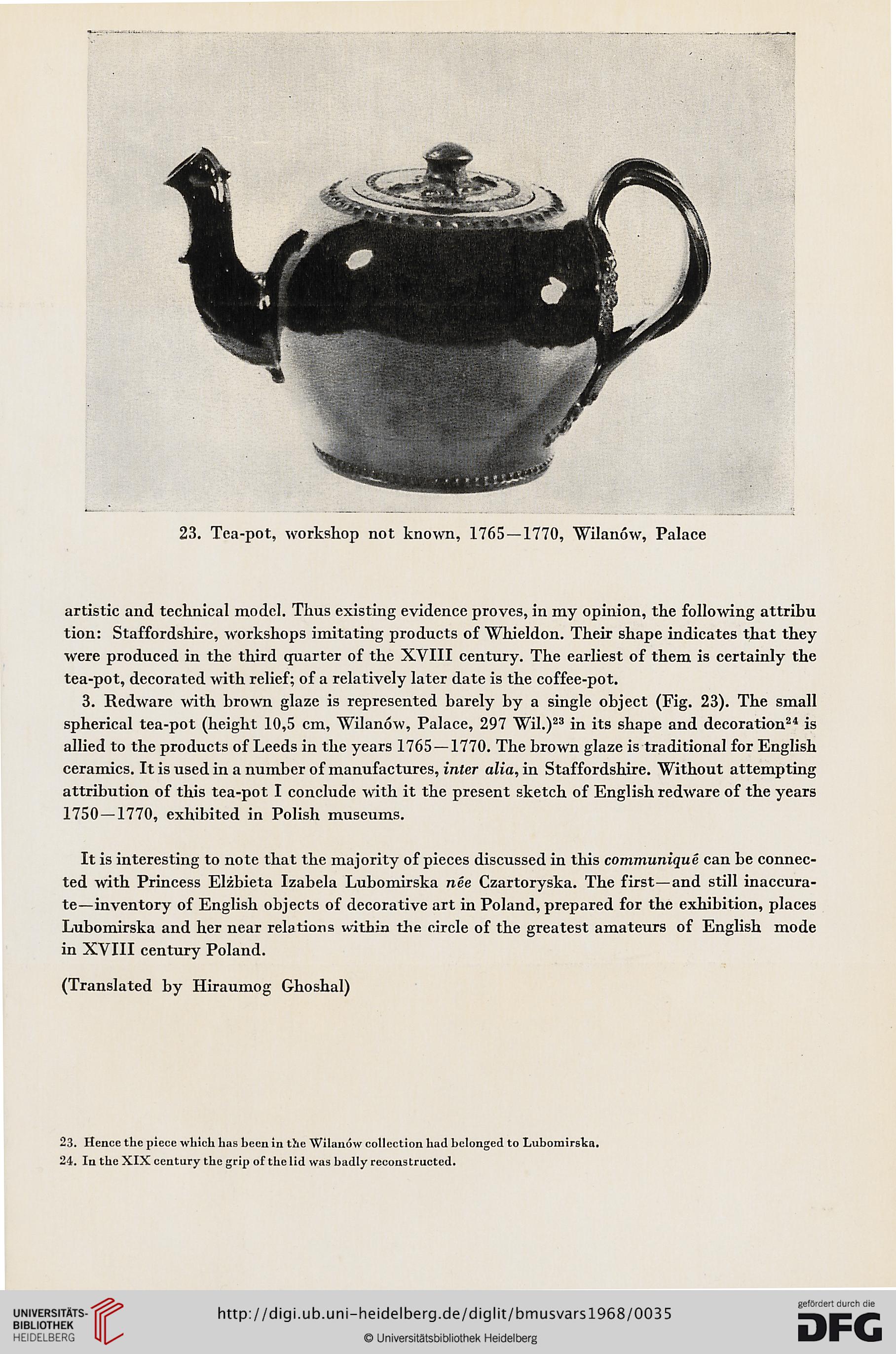23. Tca-pot, workshop not known, 1765 —1770, Wilanów, Pałace
artistic and technical model. Thus existing evidence proves, in my opinion, the following attribu
tion: Staffordshire, workshops imitating products of Whieldon. Their shape indicates that they
were produced in the third quarter of the XVIII century. The earliest of them is certainly the
tea-pot, decorated with relief; of a relatively later da te is the coffee-pot.
3. Redware with hrown glaze is represented barely by a single object (Fig. 23). The smali
spherical tea-pot (height 10,5 cm, Wilanów, Palące, 297 Wil.)23 in its shape and decoration24 is
allied to the products of Leeds in the years 1765 —1770. The brown glaze is traditional for English
ceramics. It is used in a number of manufactures, inter alia, in Staffordshire. Without attempting
attribution of this tea-pot I conclude with it the present sketch of English redware of the years
1750 — 1770, exhibited in Polish museums.
It is interesting to note that the majority of pieces discussed in this communiąue can be connec-
ted with Princess Elżbieta Izabela Lubomirska nee Czartoryska. The first—and still inaceura-
te—inventory of English objects of decorative art in Poland, prepared for the exhibition, places
Lubomirska and her near relations within the circle of the greatest amateurs of English mode
in XVIII century Poland.
(Translated by Hiraumog Ghoshal)
23. Hence the piece which has been in the Wilanów cc-Uection hau belonged to Lubomirska.
24. In the XIX century the grip of the lid was badly rcconstructed.
artistic and technical model. Thus existing evidence proves, in my opinion, the following attribu
tion: Staffordshire, workshops imitating products of Whieldon. Their shape indicates that they
were produced in the third quarter of the XVIII century. The earliest of them is certainly the
tea-pot, decorated with relief; of a relatively later da te is the coffee-pot.
3. Redware with hrown glaze is represented barely by a single object (Fig. 23). The smali
spherical tea-pot (height 10,5 cm, Wilanów, Palące, 297 Wil.)23 in its shape and decoration24 is
allied to the products of Leeds in the years 1765 —1770. The brown glaze is traditional for English
ceramics. It is used in a number of manufactures, inter alia, in Staffordshire. Without attempting
attribution of this tea-pot I conclude with it the present sketch of English redware of the years
1750 — 1770, exhibited in Polish museums.
It is interesting to note that the majority of pieces discussed in this communiąue can be connec-
ted with Princess Elżbieta Izabela Lubomirska nee Czartoryska. The first—and still inaceura-
te—inventory of English objects of decorative art in Poland, prepared for the exhibition, places
Lubomirska and her near relations within the circle of the greatest amateurs of English mode
in XVIII century Poland.
(Translated by Hiraumog Ghoshal)
23. Hence the piece which has been in the Wilanów cc-Uection hau belonged to Lubomirska.
24. In the XIX century the grip of the lid was badly rcconstructed.




